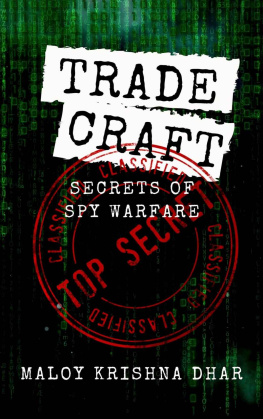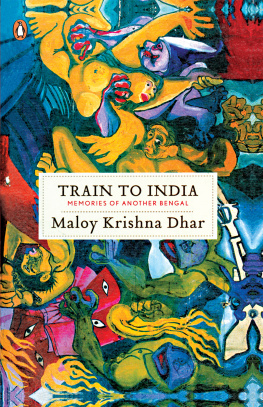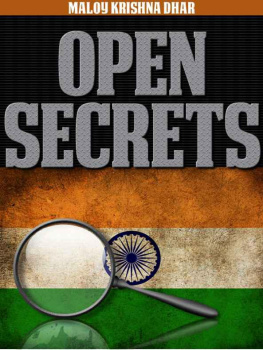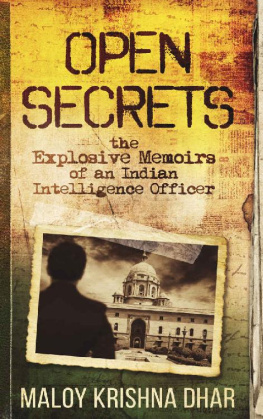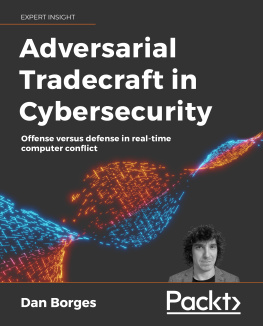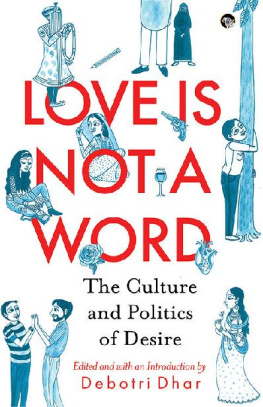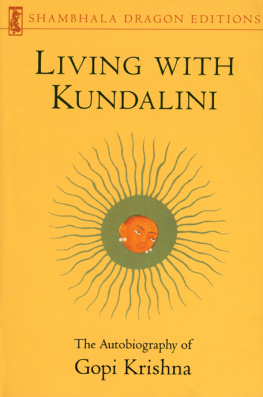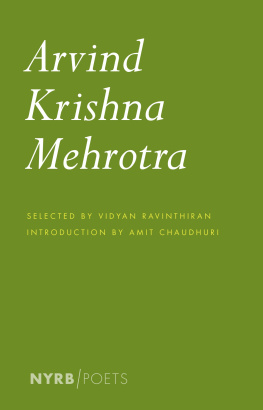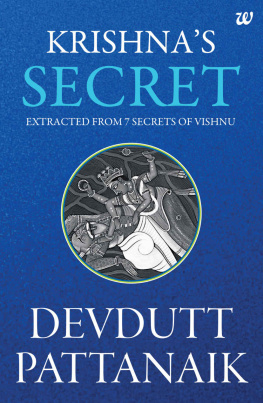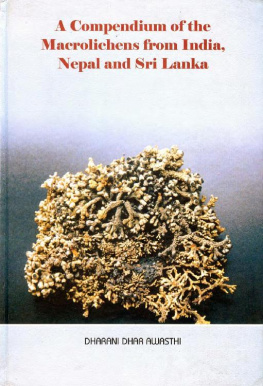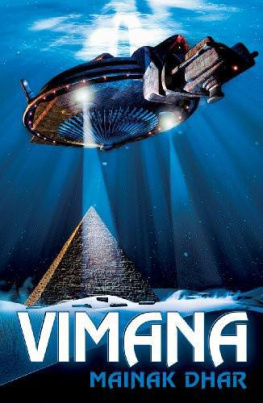Maloy Krishna Dhar - Tradecraft: Secrets of Spy Warfare
Here you can read online Maloy Krishna Dhar - Tradecraft: Secrets of Spy Warfare full text of the book (entire story) in english for free. Download pdf and epub, get meaning, cover and reviews about this ebook. year: 2020, genre: Politics. Description of the work, (preface) as well as reviews are available. Best literature library LitArk.com created for fans of good reading and offers a wide selection of genres:
Romance novel
Science fiction
Adventure
Detective
Science
History
Home and family
Prose
Art
Politics
Computer
Non-fiction
Religion
Business
Children
Humor
Choose a favorite category and find really read worthwhile books. Enjoy immersion in the world of imagination, feel the emotions of the characters or learn something new for yourself, make an fascinating discovery.
- Book:Tradecraft: Secrets of Spy Warfare
- Author:
- Genre:
- Year:2020
- Rating:3 / 5
- Favourites:Add to favourites
- Your mark:
- 60
- 1
- 2
- 3
- 4
- 5
Tradecraft: Secrets of Spy Warfare: summary, description and annotation
We offer to read an annotation, description, summary or preface (depends on what the author of the book "Tradecraft: Secrets of Spy Warfare" wrote himself). If you haven't found the necessary information about the book — write in the comments, we will try to find it.
Tradecraft: Secrets of Spy Warfare — read online for free the complete book (whole text) full work
Below is the text of the book, divided by pages. System saving the place of the last page read, allows you to conveniently read the book "Tradecraft: Secrets of Spy Warfare" online for free, without having to search again every time where you left off. Put a bookmark, and you can go to the page where you finished reading at any time.
Font size:
Interval:
Bookmark:
TRADECRAFT
SECRETS OF SPY WARFARE
MALOY KRISHNA DHAR
Copyright 2012 Mainak Dhar
All rights reserved
The characters and events portrayed in this book are fictitious. Any similarity to real persons, living or dead, is coincidental and not intended by the author.
No part of this book may be reproduced, or stored in a retrieval system, or transmitted in any form or by any means, electronic, mechanical, photocopying, recording, or otherwise, without express written permission of the publisher.
Contents
AUTHORS NOTE
I had written Open Secrets: India's Intelligence Unveiled with a view to offering a ring-side view of what happens and why such things happen in the world of intelligence, which always perplexed the common people. The idea of writing a sequel to the Open Secrets, presenting to common readers and intelligence professionals the details of the science and arts of intelligence tradecraft, was seeded in my mind. These are researched in written literature and are taught in foreign universities. In India  no such literature is available on India's internal and external security concerns. I nursed and studied the science as practiced by the intelligence agencies of various counties. Tradecraft is, therefore, a sequel to Open Secrets, which tries to explain how the intelligence trade is conducted by the agencies and which instruments they use.
no such literature is available on India's internal and external security concerns. I nursed and studied the science as practiced by the intelligence agencies of various counties. Tradecraft is, therefore, a sequel to Open Secrets, which tries to explain how the intelligence trade is conducted by the agencies and which instruments they use.

T he idea was reaffirmed when I was appointed as the Assistant Director, Training for the Intelligence Bureau. While teaching and supervising the instructors I realized that over 95% of the intelligence operators were not equipped and educated enough to teach various aspects of training a recruit and convert him to an intelligence operator. I used the spare time to read whatever books were available in open market sources.
Later, when I headed the counter-insurgency and counterintelligence matters, many challenges accosted my officers and me. No textbook or classroom solution was there. Discussions with grassroots level officers, subtle experimentations and often bold application helped me in building a structure of theories and practices in these challenging fields of operation.
As Joint Director of the Technical Intelligence branch I received an opportunity to clear up the junkyard of unused and unusable communication equipment and accessories and the Techlnt operators were motivated to acclimatize with newer equipment. General duty intelligence operators were encouraged to gain knowledge about the forbidden world of Techlnt and some of them developed the aptitude for application of the system tools for intelligence generation. For the first time the forbidden cove of Techlnt division, in primary stages of development, was opened up to officers oriented in operational application.
The mysterious world of Signals Intelligence (Siglnt) was also in my domain and with the assistance of certain forward-looking officers, the wing was revitalized. This was the time when the Intelligence Bureau leapt into the field of Satellite Communication (SATCOM), Computer Communication and Intelligence (Comlnt) and certain distant locations of India were connected to the  main hub of activities of the Intelligence Bureau. This fruitful period educated me about application and innovation of new methods of applicability of bugging devices, clandestine audio-video operations and application of radio communication during surveillance.
main hub of activities of the Intelligence Bureau. This fruitful period educated me about application and innovation of new methods of applicability of bugging devices, clandestine audio-video operations and application of radio communication during surveillance.
Obviously, technological advancements were intensified from  the days the IB was involved in Punjab, Kashmir and Assam operations. I had the fortune of learning from these landmark developments. The Techlnt divisions of the Indian intelligence edifices have been revolutionized during the last 15 years and more changes are taking place. Yet, against adversaries who are also constantly evolving, we cannot afford to stay still.
the days the IB was involved in Punjab, Kashmir and Assam operations. I had the fortune of learning from these landmark developments. The Techlnt divisions of the Indian intelligence edifices have been revolutionized during the last 15 years and more changes are taking place. Yet, against adversaries who are also constantly evolving, we cannot afford to stay still.
Part of my objective in writing Tradecraft is to share some of the knowledge I have gleaned through my personal experiences and research. Such books are common in the West, but in India, till date, no systematic study on intelligence tradecraft has been published. I do not claim to know it all or to have this book as the last word. Rather, I would like this to be the starting point for future officers to build on with their own experiences and innovations.
The audience for this book is however, not just restricted to those engaged in the world of intelligence. The lay reader, whose perceptions of the world of intelligence and spies is shaped by movies and novels, will hopefully gain deeper insight and appreciation how unsung and unknown warriors of the intelligence fraternity help keep them safe, not through the special effects of Hollywood 007s but through hard work, dedication and systematic application of the art and science of tradecraft.
- Maloy Krishna Dhar
ONE: INTELLIGENCE DEFINED
Intelligence in modern world, especially after the First World War and during the Second World War assumed great importance in the lives of the nations and peoples. Nations and States always recognized that Intelligence was as important a part of Statecraft as were diplomacy, strategic formulation of external policies, security estimate of the internal situations and even conduct of day to day administration. In a vast and complicated country like India, which has been a cruces of civilizations, internal intelligence always was given equal importance as was the matters related to external intelligence. The internal aspect is again not purely internal. With extensive borders with inimical nations like Pakistan and China and mostly porous borders with Nepal, Bangladesh and Myanmar on the one hand and a vast coastline to defend against unwarranted incursions by hostile elements, the concept of internal intelligence in India was intricately knotted with aspects of external intelligence.
What is Intelligence? Intelligence pundits, scholars and philosophers have tried to define intelligence in the light of their own exposs in the fields of overt and covert intelligence gathering and manufacturing experiences, generalization and often related to Free Worlds struggle against the Iron and the Bamboo Curtain countries. Somewhere the interpretations have been narrowed down to World War Two experiences and later experiences with the extremely hot Cold War.
Western writers often fall back on the Chinese sage Sun Tzu who wrote about the importance of foreknowledge being, the reasons the entitled prince and the wise general conquer the enemy whenever they move.
Nearer home there are misplaced beliefs that Kautilyas Arthashastra was written by Kautilya, alias Vishnugupta alias Chanakya for Chdragupta Mauriya, a contemporary of Alexander the Great, 3 rd century B.C. The temptation to consider the Arthashastra to have been composed specifically for the guidance of Chandragupta should be resisted, as the existence of the Empire of Chandragupta is completely ignored in this work. Kautilya Arthashtra, by M. B. Chande, Atlantic Publishers and Distributors, Delhi, p. 21. Certain estimates indicate that the Arthashastra was composed over years much earlier to 3 rd century B. C. The wisdom book received present shape sometime in 10 th century. Some historians are tempted to believe the compilers might have been wisecracks like Kautilya and Vishnugupta. It was given the stamp of Chanakya as he had figured prominently in the making of history from the time of Chandragupta Mauriya.
Whatever the historicity of Kautilya might have been the summations of Intelligence as concept and its tradecraft have been detailed in the Arthashastra in chapters eleven to sixteen of the classical book. Starting from appointment of persons in secret service, creation of Establishment of spies, the Arthashastra enumerated and detailed almost all aspects of intelligence gathering and reporting as an integral part of statecraft, war and peace.
Next pageFont size:
Interval:
Bookmark:
Similar books «Tradecraft: Secrets of Spy Warfare»
Look at similar books to Tradecraft: Secrets of Spy Warfare. We have selected literature similar in name and meaning in the hope of providing readers with more options to find new, interesting, not yet read works.
Discussion, reviews of the book Tradecraft: Secrets of Spy Warfare and just readers' own opinions. Leave your comments, write what you think about the work, its meaning or the main characters. Specify what exactly you liked and what you didn't like, and why you think so.

